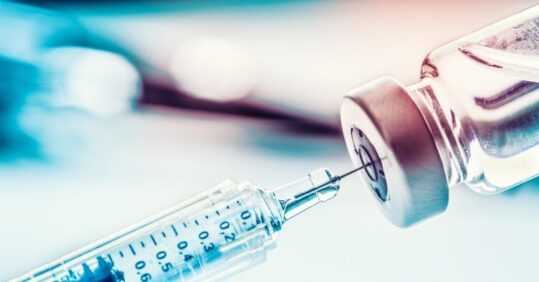Plans announced for autumn Covid booster programme

Preliminary plans have been announced for an autumn Covid booster programme, which should not ‘rely too heavily’ on practices, NHS England has said.
New NHS England guidance setting out further details on the upcoming programme also said that local commissioners may use vaccination centres to ‘deliver other routine immunisations’.
Last month, the Joint Committee on Vaccination and Immunisation (JCVI) recommended another autumn booster vaccine for some at-risk groups and frontline health and social care workers, under interim guidance.
NHS England’s new guidance reiterated that commissioners should plan to deliver autumn Covid vaccines ‘on a minimum scenario for cohorts 1-6 and a maximum scenario of cohorts 1-9 without disruption to core health and care services, subject to final JCVI advice’.
Related Article: Improving lung health one song at a time
It added: ‘New contracts and full details about an expressions of interest process for community pharmacy and an opt-in process for general practice involvement in the Covid-19 vaccination programme from autumn 2022 will be published shortly.’
However, it said that commissioners must ‘have a sustainable network that does not hinder wider NHS services and does not rely too heavily on general practice’.
And it added that autumn plans for the rapid deployment of additional Covid vaccines ‘in the event of a surge’ must also ‘limit the impact on primary care, routine and elective NHS activities, including other routine immunisation programmes’.
Commissioners should ‘maximise the use of the national protocol and reduce the pull on registered healthcare professionals’, it said.
The guidance added that all participating vaccination sites ‘will be expected to create opportunities to improve population health, delivering as a minimum health promotion advice and offering health checks where possible’.
Meanwhile, NHS England said its focus is on ‘the restoration and improvement of all routine immunisation programmes and the delivery of Covid-19 and flu’.
It added: ‘Systems should maximise opportunities to co-promote and co-administer where possible and clinically advised (e.g. Covid-19, flu and pneumococcal), especially where this improves patient experience and uptake.
Related Article: Nurse had to ‘freeze’ PPE during pandemic to re-use in care home, Covid inquiry hears
‘Local commissioners may use vaccination centres to deliver other routine immunisations if appropriate.’
They should ‘consider how vaccination centres, workforce and engagement activities can be used through the summer’ to support catch-up campaigns for MMR, Td/IPV, Men ACWY, HPV and other routine vaccines, which should be ‘expedited’, the letter said.
NHS England also said it will consult ‘over the next few weeks’ about its development of a future ‘integrated vaccination and immunisation strategy’ and service.
In January, the health secretary said that a ‘national vaccination service’ is needed to ensure practices are not asked to stop routine care again, controversially suggesting that the service could cover ‘other vaccines’ as well as Covid jabs.
NHS England’s letter also set out:
Related Article: NHSE confirms dates and eligibility for autumn Covid and flu jabs
- The spring booster campaign will conclude this month, with all those eligible to be invited and vaccinated ‘by the end of June’
- It is ‘expected’ there will be a minimum 91-day interval between an individual’s last dose and any autumn vaccination offer, so those entering care homes or turning 75 after 30 June will not be eligible for a jab until the start of the autumn programme
- However, newly-immunosuppressed individuals should continue to be offered vaccination throughout the summer and those who became eligible for a spring booster on or before 30 June will still be able to book a vaccine after this date, subject to ‘clinical conversations’ at the point of care about the ‘optimal timing of a booster dose’ prior to an autumn programme
Earlier this month, NHS England asked practices to urgently run searches for immunosuppressed patients who have yet to have their ‘spring’ Covid booster jab.
A version of this article was originally published on our sister title Pulse.

See how our symptom tool can help you make better sense of patient presentations
Click here to search a symptom




